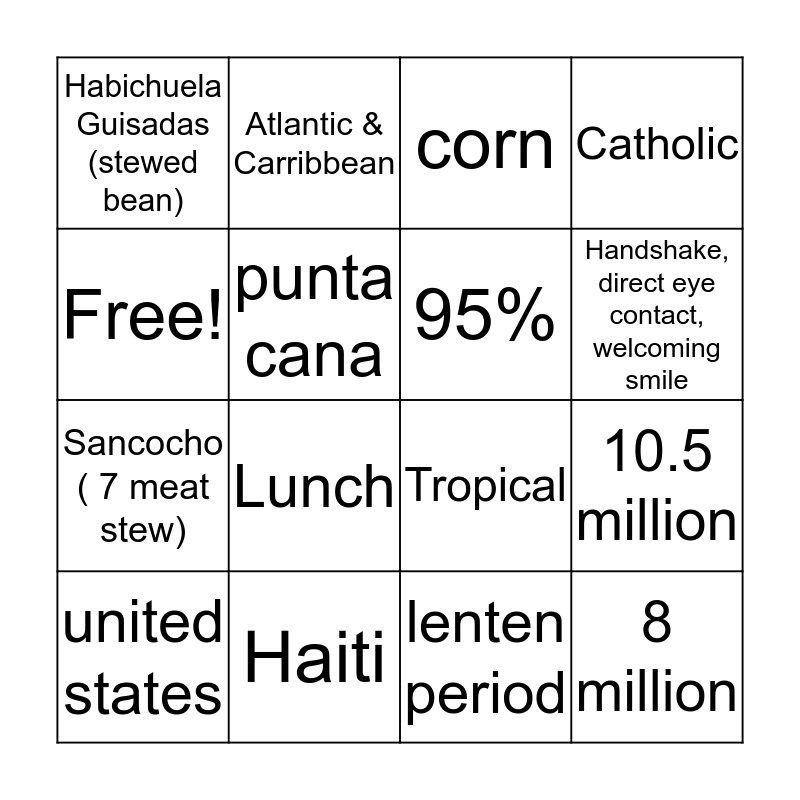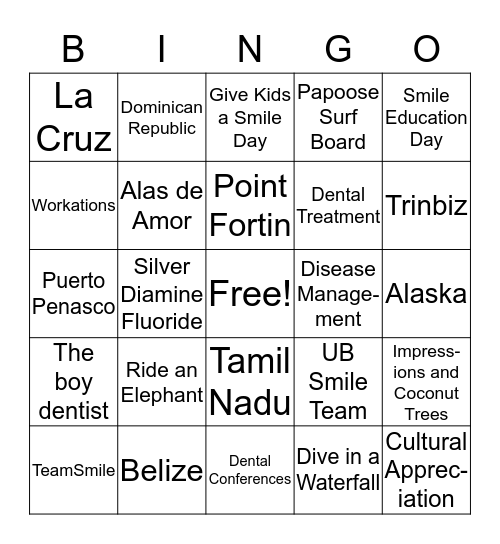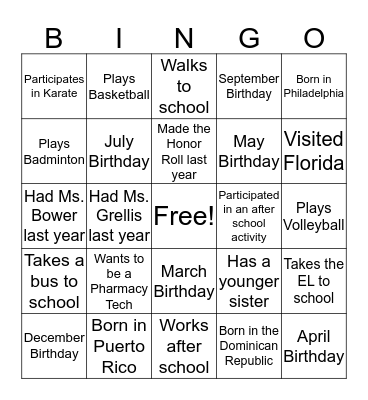Dominican Bingo Set
Whether you hit it with legs 11, a lucky 7 or the Devil’s number 13, a win is a win. This kit includes everything you need to have a game including a rotary cage with automatic call selector, 75 numbered balls, a drawn ball holder, 18 reusable bingo cards and 150 token markers. Product Title Ready Set Discover Bingo Game for Kids Ages 3+ Average rating: 4.8 out of 5 stars, based on 8 reviews 8 ratings. Current Price $4.97 $ 4. $4.97 per each $ 4. Product Title Deluxe Metal Bingo Cage Set. Average rating: 4.1. Product Title Classic Game Collection - Travel Bingo Set. Average rating: 3.9 out of 5 stars, based on 30 reviews 30 ratings. Current Price $23.42 $ 23. Today we gonna do an unboxing of this classic mexican board game called 'Loteria' is like American Bingo game but in Mexican Style, im gonna show you the car.
What are Dominoes?
The game of dominoes has existed for hundreds of years, having been mentioned in documents from 13th century China. The game is played with a set of rectangular tiles or dominoes. These will be plain or decorated on one face, and on the other face, they will have two sets of spots, or 'pips'. The length of a tile is normally double its width, and they are made thick enough to stand on their side for those who enjoy making a pattern and watching the dominoes fall in succession.

How Many Dominoes in a set?
A set, or deck, typically consists of 28 dominoes. The pips on the tiles will represent the 21 pairs of numbers which can be thrown with a pair of standard dice, plus seven more including a zero or blank. Larger sets are made, featuring more pips, to enable more players to take part, but we will focus on the standard 28-tile dominoes set here.
How do you Play Dominoes?
Players place tiles on the table in turn, matching one face of the domino with an open face of one that has already been played. The objective of dominoes is generally to score the most points, by putting your tiles down in the most advantageous way, although some versions are won by the first player to put down all of their tiles. The game can be surprisingly strategic, and, whilst luck does play a part, it is very difficult to beat a skilled player with any consistency.
Dominoes Game Rules - Straight Dominoes

- Straight dominoes can be played by two to four players.
- Tiles must be mixed up before the players can draw their hand. This is done by a process of shuffling, whereby the tiles are placed face down on a flat surface and one player moves them around randomly without maintaining contact with any specific tiles.
- The players then draw one domino each, to determine who plays first. The player drawing the highest double goes first, or, if no double is drawn, the player with the highest-scoring domino.
- Each player now draws a hand of seven tiles, with the player who did the shuffling drawing last.
- If there are tiles left over, these remain face down to be drawn by players who are unable to put anything down on their turn.
- The first player begins by laying their chosen tile face-up in the middle of the table.
- The next player must match one end of one of his dominoes to part of the first tile.
- In some versions, for this domino only, tiles are allowed to be joined to all four sides, creating four open lines to which new dominoes can be added.
- From this point, players can add their tiles to whichever line they choose. If a double is played, this is laid perpendicular to the line, and the pips on both ends are counted.
- If a player does not have any dominoes which can be played, they must draw another from the unused tiles.
Dominoes Scoring
Points are scored by a player in straight dominoes if the total number of pips on the exposed ends of the dominoes at either end of the line is divisible by five, in which case that number is scored.
Other versions allow only scores which are divisible by three or make no restriction. If a player is able to play their last domino, then, in addition to the points which would otherwise have accrued, they score the total of the number of pips on the tiles which remain in each player's hand.
Games are often played until one competitor reaches a preset score, typically 250. Some types of the game simply award victory to the first player to play all of their tiles. It can happen that no player can play a tile, in which case the game is said to be 'blocked'. The winner of this game is the player with the smallest number of pips on their remaining tiles, and they will score the total number of pips remaining on their opponent's tiles.
Dominoes Strategy
The best strategy to use will depend upon the form of the game and the scoring system. Nonetheless, under any system, a player will want to
Dominican Bingo Set
- Ensure that they are not left with tiles which cannot be played,
- Ensure that they are not left with particularly tiles which have a large number of pips which could count against them at the end.
Tips
- It is particularly helpful to play doubles early, as these have the same number of pips at each end and there will fewer opportunities to play them. The second highest priority will be the biggest scoring tiles, due to the penalty for being left with these.
- Retaining a wide range of numbers on your remaining tiles is a good plan, as this means you are more likely to be able to play a tile whatever your opponent does.
- Equally, a good strategist keeps careful note of when their opponent passes, so that they are aware of the numbers that their adversary is short of.
- Finally, as the game progresses, if you analyse the tiles played and those you have, in conjunction with your opponent's passes, you should be able to work out which tiles they have, enabling you to block them.

Bingo arose in the U.S. during the Great Depression. By 1934, Americans were organizing 10,000 Bingo games a week.
Is there any other single word that both expresses exuberant success and one that is closely associated with Catholicism as “Bingo?”
What a game! It’s rare to come across any game that interests both young and old alike.
I recall sitting next to my parents in the basement of our Manhattan church playing Bingo on Friday nights. I especially recall the first time my parents trusted me with my own Bingo card.
Though Bingo is closely associated in the public imagination with Catholicism, the game’s origins are by far more interfaith and ecumenical.
I don’t have to explain the whys and wherefores of the game to cradle Catholics, but for our newly arrived brothers and sisters, allow me to illuminate you.
Bingo is a game of chance in which players match 24 numbers printed on small cards in a 5×5 matrix cards (including a FREE square in the middle which is considered automatically filled) with random numbers selected from one to 75. Each of the five columns of numbers printed on the card are labeled with the letters B, I, N, G and O. This facilitates identifying the called-out numbers.
Dominican Bingo Sets
I had the unique experience of actually introducing the game to an entire school when I volunteered as a lay missionary in Burma. The children had never heard of the game and I needed a fun way to introduce numbers in my ESL class so I had a friend mail me a Bingo set―with a cage, after all, because if we don’t keep tradition alive, a little part of us dies. Now the kids can’t get enough of the game.
Typical. What child wouldn’t want to play a game during school time?
In a month, my students were pronouncing English cardinal numbers perfectly.
One day, my kids wanted to play the game but we had misplaced the cage. So as to not waste time, I pulled up a Bingo number generator on my cellphone and called out the numbers using it.
My kids were less than impressed. They wanted the cage back.
An early version of this game was created in Italy called Il Giuoco del Lotto d'Italia. (“The Italian Lottery Game”) around 1530. French and German versions developed later in the 19th century.
In the early 1920s, Hugh J. Ward created a version of the game which he called “Beano.” It became popular at carnivals in the Pittsburgh and the Western Pennsylvania area. He copyrighted it and published a rule book for it in 1933.
But the game was popularized and commercialized by Edwin Lowe, a New York toy salesman and the son of Jewish Polish immigrants. He came across the game being played in Atlanta in December 1929. Lowe took the idea home with him and produced two versions―a 12-card set for $1.00 and a $2.00 set with 24 cards.
This is where the game got interesting — and Catholic. Several months after the game hit the market, Lowe was approached by an unnamed Catholic priest from Wilkes-Barre, Pennsylvania, who had seized upon the game thinking it the solution to his problem of financing the parish school. He bought several sets of the game and invited his parishioners to play the game. But as each set had multiple copies of the same cards, Father was saddled with handing out a lot of prizes each time Bingo! was called.
So he approached Lowe. The manufacturer instantly saw the great possibilities of Bingo being used as a fundraiser, but to make it possible, a great many more cards with unique combinations of numbers would have to be created to make it feasible.

Lowe approached Columbia University mathematician Carl Leffler, asking him to create unique, non-repeating numbered Bingo cards. By 1930, Leffler was printing 6,000 different Bingo cards.
Lowe also developed, produced and marketed the game Yahtzee. His company was ultimately sold to Milton Bradley in 1973 for $26 million.
(Author’s Note: For those who are interested, mathematically-speaking there are exactly 552,446,474,061,128,648,601,600,000 possible Bingo card combinations.)
The priest from Wilkes-Barre saved his parish school and spread the good news about Bingo to a Knights of Columbus Hall in Utica, New York, which was also saved.
And there was much rejoicing in the village.
By 1934, Americans were organizing 10,000 Bingo games a week. Bingo soon became as American as baseball, mom and apple pie.
However, not every Catholic was keen-o on Bing-o, labeling the fundraising mechanism as a game of chance that had no place in a house of God. Among these party poopers was New York’s mayor, Fiorello LaGuardia, who feared that criminals would get involved in the game and turn it into a racket. The mayor ordered a temporary Bingo ban in 1938. A few years later, the New York State Legislature passed a law that restricted Bingo to churches and synagogues as long as the proceeds went toward a charitable cause.
In 1942, the Archdiocese of New York put a halt to all bingo games within its borders. The law was rescinded a few years later when cooler, more fun-loving heads prevailed.
But though it has a long association with Catholicism, synagogues and other Christian churches often held a weekly Bingo game to supplement their dues and collections.
In this regard, Bingo is a truly American game — or, at least, a truly Americanized game.
Some contemporary people might think Bingo old-fashioned and déclassé, but they don’t know what they’re talking about.



